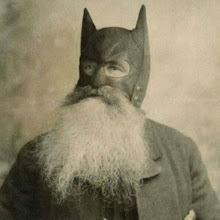Space Ghost
(With the Gemini IV capsule, from which Edward White walked in space. This is my re-creation.)
"You're like a fat kid in a candy store."
Henry noted the bounce in my step. I don't bounce much these days, especially in public. Most especially among tourists.
We'd been in the Smithsonian's Air and Space Museum for five minutes, and my eyes widened. The better part of my childhood surrounded us. Facts I thought I'd forgotten burst into flame.
Space race artifacts orbited our heads. But it was the Apollo 11 display that got things bouncing.
It's a corny set-up: mannequin Neil Armstrong watches mannequin Buzz Aldrin make a second giant leap for mankind. And the lunar module is a replacement. Yet it struck a primal chord.
I remember the moon landing and walk in real time. I was nine. At my grandparents' house. The only light in the darkened room was the large TV. The lunar surface resembled a vacant lot. Armstrong and Aldrin looked like ghosts.
The adults around me gasped and cried. I was mesmerized. Maybe a foot from the screen, soaking in the moon's rays. Normally my mother would tell me to move back. "You'll burn your eyes out!" But she wasn't speaking. No one was.
I'd followed the space program since I was conscious enough to do so. I remember the end of the Gemini program. The first Apollo crew burned to death during a test. Mention Wally Schirra and I'll give you Alan Bean and Eugene Cernan.
These frequent shots into space helped soften the harder blows of my childhood. I hated models and the smell of airplane glue. But I assembled and displayed models of Apollo 8 and 11. Bought albums of the transmissions between Mission Control and the Mercury and Gemini pilots.
I studied as much as I could about the origins of the space program. Read about the Soviet program. Thought that cosmonaut was a cooler tag than astronaut (Astro was The Jetsons' dog). Neglected my schoolwork in favor of science fact. An autodidact prepares.
It all rushed back on July 4th. Fitting, I suppose. My enthusiasm infected Henry, who was initially indifferent to visiting the museum.
We smiled and laughed. I spilled all my facts on him. He offered his thoughts. Asked interesting questions. Made logical connections.
For the first time in weeks, I felt some peace. Even the endless Old Navy Old Glory t-shirts didn't irritate me.
The night before, I had a long conversation with Jon Schwarz, who urged me to take Henry to the museum, in case my interest flagged. I didn't need added incentive, but Jon's enthusiasm for the possibilities of American creativity was invigorating.
Jon is much more optimistic than me. He's made his case to me many times. I don't fault his reasoning; I simply don't share it. Usually. But this time Jon semi-hooked me.
Our talk was a touch utopian, yet that didn't bother me. In essence, Jon is right: there is enough intelligence and talent to not only rebuild the US infrastructure, but to reform and possibly reshape American reality.
Of course, there are massive corporate forces keeping us from having say, a 21st century rail system. But the know-how is there. Waiting. Dying on the vine.
"When you look at the space program, you see what's possible," Jon said. True. Human ingenuity is constant. It's the political/financial context that dilutes much of it.
Henry told me how lucky I was to have grown up during that time. "We've got nothing like that," he added. Not yet, son. But the possibilities are closer than you know.


<< Home